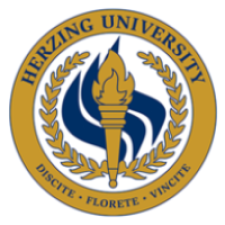
435 Ford Road Suite 1000
St. Louis Park, MN 55426
United States
Certificates / Diplomas
Associate Degree
Bachelor's Degree
Cost
Living On-Campus
14,200
Living Off-Campus
28,645
Living with Family
14,200
Average Net Price
$15,275 / year
This is the average annual amount that first-time, full-time undergraduate students pay at this institution after subtracting all grants and scholarships from the cost of attendance.
Show Net Price details
Net cost after grants and scholarships by income
$0-$30,000:
$14,559
$30,001-$48,000:
$13,480
$48,001-$75,000:
$12,787
$75,001-$110,000:
$20,183
Over $110,000:
$20,906
This net price data shows the average amount students have paid, according to their family income, after subtracting all grants and scholarships.
College Profile
Student/Faculty Ratio
25:1
Size of Student Body
903
Average Class Size
25
Graduate Students Enrolled
11
Show Undergraduate Student Body details
Breakdown by Race
Black or African American:
30%
Hispanic:
7%
Asian:
12%
White:
42%
Two or more races:
3%
Unknown:
6%
Breakdown by Age
19 and Younger:
3%
20 to 24:
35%
25 to 34:
42%
35 to 44:
15%
45 and Older:
5%
Breakdown by Gender
Men:
12%
Women:
89%
New entering students who are transfers
32%
Student Success
Graduation Rate for Four-Year Programs
47%
Show Graduation Rate 4-yr Institution details
Completers within 6 years by race
American Indian or Alaska Native:
100%
Asian:
100%
White:
67%
Unknown:
33%
Completers within 6 years by gender
Men:
25%
Women:
55%
Show Retention Rate details
Retention Rate By Type
Full-time:
57%
Part-time:
72%
Campus Settings
Financial Aid
Average amount of federal, state, local, institutional or other sources of grant aid awarded to undergraduate students
$6,816
The following information pertains to first-time full-time undergraduate students.
Show Financial Aid details
Average amount of aid awarded to full-time first-time undergraduates
State/Local grant aid:
$3,232
Institutional grant aid:
$1,978
Federal grant aid:
$3,770
Average amount of grant aid awarded by income (all sources)
$0-$30,000:
$8,438
$30,001-$48,000:
$8,469
$48,001-$75,000:
$7,166
$75,001-$110,000:
$9,419
Over $110,000:
$1,398
School Scholarships
No
Financial Aid Contact
Cumulative Debt
This section shows the median debt graduates incurred to complete their degree at this institution.
Median Cumulative Debt by Degree Type
- Associate's Degree: $12,572
- Undergraduate Certificate: $12,679
- Bachelor's Degree: $28,970
Percent of Graduates With Loans
- Associate's Degree: 13%
- Undergraduate Certificate: 87%
- Bachelor's Degree: 91%
Admission Information
- School applications (online)
- Nursing programs: Test of Essential Academic Skills ("TEAS")
- High School Diploma or GED
- Transcripts
- Interview
- 1. Prior Education Requirement: An applicant must have a U.S. high school diploma or the equivalent. The University recognizes the following equivalents to a high school diploma: 2. Entrance Testing: An applicant must demonstrate the capacity to succeed in college-level courses. This must be evidenced through one of the following methods: 3. Personal Commitment and Professional Attitude: *Of importance for the applicant’s success is willingness to make those sacrifices necessary to successfully complete the program of study and a commitment to adhere to the University’s rules and expectations. 4. Availability of Time: An applicant must have the availability of time to attend classes and labs, to complete projects, and to submit assignments in a timely manner.
- Accepts dual credits
- Accepts exam-based credits
- Institution awards credits for military training
Application Timelines
Financial Aid Application Deadline
N/A
Admissions Contact
Graduate Employment Outcomes
The data displayed below comes from the Graduate Employment Outcomes tool and only reports on graduates employed in Minnesota. This section shows employment data for graduate class of 2020, including percent of graduates with full-time employment in the 3rd year after college graduation and the median annual wages by award level, according to the Minnesota unemployment insurance records. Data does not include federal employees, self-employed (e.g. professional freelancers, artists, developers, designers, business owners), military, or individuals who moved out of state for a job. The list below may be incomplete and limited to some majors. Additionally, data has been suppressed when it refers to 10 or less students.Jump to:
This profile features institution-wide data. Be aware that some categories may not be showing and that data is suppressed when reporting is for 10 or less students. Most data and terminology is sourced from IPEDS. To learn more about each section, please refer to Data Sources.
The College Search Tool provides information and reported data for postsecondary institutions in Minnesota that receive federal and state financial aid. For licensed occupational training providers in Minnesota, please visit OHE's Licensed Career Schools.

